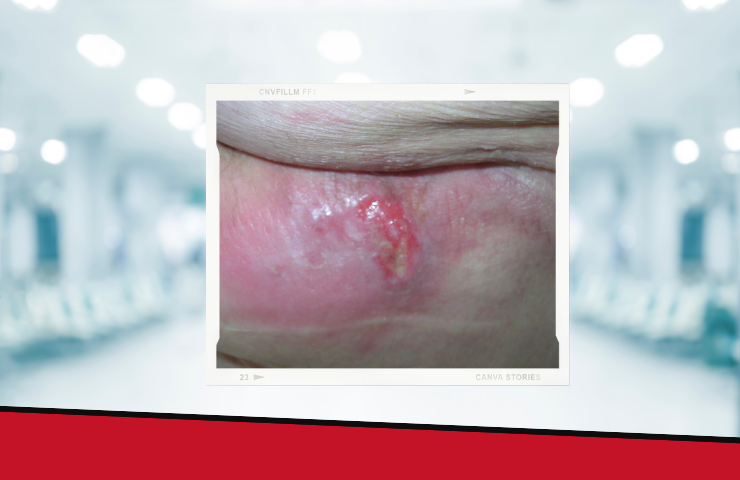


What is wound exudate? Exudate (drainage), a liquid produced by the body in response to tissue damage, is present in wounds as they heal. It consists of fluid that has leaked out of blood vessels and closely resembles blood plasma. Exudate can result also from conditions that cause edema, such as inflammation, immobility, limb dependence, and venous and lymphatic insufficiency.
Accurate wound assessment of exudate is important throughout the healing process because the color, consistency, odor, and amount change as a result of various physiologic processes and underlying complications.
Consistent terminology is crucial to ensure accurate communication among clinicians. Here are terms you should keep in mind when observing the wound and documenting your findings.
Serous—thin, clear, watery plasma, seen in partial-thickness wounds and venous ulceration. A moderate to heavy amount may indicate heavy bio-burden or chronicity from a subclinical infection. Serous exudate in the acute inflammatory stage is normal.
Sanguineous—bloody drainage (fresh bleeding) seen in deep partial-thickness and full-thickness wounds during angiogenesis. A small amount is normal in the acute inflammatory stage.
Serosanguineous—thin, watery, pale red to pink plasma with red blood cells. Small amounts may be seen in the acute inflammatory or acute proliferative healing phases.
Purulent—thick, opaque drainage that is tan, yellow, green, or brown. Purulent exudate is never normal and is often associated with infection or high bacteria levels.
Selected References
A useful resource to help you with your wound assessment is the Bates-Jensen Wound Assessment Tool. https://wwwoundcare.ca/Uploads/ContentDocuments/BWAT.pdf
Gefen, Amit; Santamaria, Nick. Saturation of a dressing applied to an exuding wound: the gap between clinical judgment and laboratory testing. Wounds International. (May 19, 2021). Retrieved from https://www.woundsinternational.com/resources/details/saturation-dressing-applied-exuding-wound-gap-between-clinical-judgment-and-laboratory-testing
Jeffery, Steven LA. Wound moisture sensing in traumatic wounds. ENT & Audiology News. (July 1, 2014). Retrieved from https://www.entandaudiologynews.com/features/ent-features/post/wound-moisture-sensing-in-traumatic-wounds
Milne, Catherine; Thomason, Helen; Hughes, Maria. (2020). Managing highly exuding wounds — removing the risk of infection. Sophia University Institute. Retrieved from https://www.coursehero.com/file/98260384/managing-highly-exuding-wounds-removing-risk-infection1pdf/
World Union of Wound Healing Societies (WUWHS) Consensus Document. Wound exudate: effective assessment and management Wounds International. (2019). Retrieved from https://www.wuwhs.org/wp-content/uploads/2020/09/exudate.pdf
Nancy Morgan RN, BSN, MBA, WOCN is an experienced clinician, successful business leader, and accomplished nurse educator in the field of wound assessment and management. She is the co-founder of the Wound Care Education Institute, (WCEI®), Wild on Wounds Productions; and, most recently established Nancy Morgan Wound Care offering innovative, educational resources including seminars, webinars, social media and wound care marketing tools to assist and support wound care clinicians at the bedside. Nancy is one of the most distinguished wound care educators, delivering nearly 1200 lectures, conference keynote addresses, seminars, webinars, and bedside consultations during her career.
Information in Nancy Notes is courtesy of Nancy Morgan Wound Care, copyright 2021.
DISCLAIMER: All clinical & legal information, text and graphics, in this blog are intended to assist with determining appropriate wound therapy or proper legal information. It is not intended to be a substitute nor constitute providing legal or medical care or advice, diagnosis, or treatment. Responsibility for final decisions and actions related to legality and care of specific patients shall remain the obligation of the institution, its staff, and the patients’ attending physicians and their legal representation. Individuals should always contact their healthcare providers for medical or emergency-related care and/or contact their retained attorneys or their legal representation.